Tarja Halonen
| Tarja Halonen | |
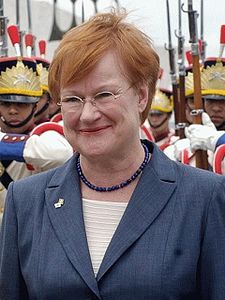 |
|
|
|
|
| Incumbent | |
| Assumed office 1 March 2000 |
|
| Prime Minister | Paavo Lipponen Anneli Jäätteenmäki Matti Vanhanen Mari Kiviniemi |
|---|---|
| Preceded by | Martti Ahtisaari |
|
|
|
| Born | 24 December 1943 Kallio, Finland |
| Political party | Social Democratic Party |
| Spouse(s) | Pentti Arajärvi (2000–present) |
| Children | Anna Halonen |
| Residence | Mäntyniemi |
| Alma mater | University of Helsinki |
| Profession | Lawyer |
| Signature | |
| Website | Official website |
Tarja Kaarina Halonen (Finnish pronunciation: [tɑrjɑ kɑːrinɑ hɑlonen]; born 24 December 1943) is the 11th and current President of Finland. The first female to hold the office, Halonen had previously been a member of the parliament from 1979 to 2000 when she resigned after her election to the presidency. In addition to her political career she had a long and extensive career in trade unions and different non-governmental organizations.
Halonen is a graduate of the University of Helsinki, where she studied law from 1963 to 1968. She was active in student politics and served as the Social Affairs Secretary and Organization Secretary of the National Union of Students from 1969 to 1970. In 1971 she joined the Social Democratic Party and worked as a lawyer in the Central Organisation of Finnish Trade Unions until she was elected to parliament in 1979.
Halonen served in the parliament of Finland for six terms, from 1979 to 2000, representing the constituency of Helsinki. She also had a long career in the city council of Helsinki, serving there from 1977 to 1996. She started her campaign for the presidency at the beginning of 1999 after President Martti Ahtisaari announced that he would not stand for a second term in the office. She easily won her party's nomination, and eventually got 40% of the votes in the first round of the presidential elections, and 51.6% in the second, thus defeating the Centre Party's Esko Aho and becoming the 11th president of Finland.
During the time of her presidency she has been extremely popular among Finns: her approval ratings rose and reached a peak of 88% in December 2003. Even though her ratings were so good, she was not re-elected in the first round in the next presidential elections in 2006. She beat National Coalition Party candidate Sauli Niinistö in the second round by 51.8% against 48.2%. In 2004 she finished 5th in a TV-show called Great Finns, which was based on the BBC's 100 Greatest Britons.
Halonen is widely known for her interest in human rights issues. In 1980–81 Halonen served as the chairman of SETA, the main LGBT rights organization in Finland. During her presidency, she has participated actively in discussion of women's rights and problems of globalization. In 2006, she was mentioned by many sources as a potential candidate for the United Nations Secretary-General selection, but later she stated that she wanted to finish her term as president before thinking about other career options. Halonen is a member of the Council of Women World Leaders, an International network of current and former women presidents and prime ministers whose mission is to mobilize the highest-level women leaders globally for collective action on issues of critical importance to women and equitable development. In 2009, Forbes named her among the 100 Most Powerful Women in the world.[1]
Early life and career
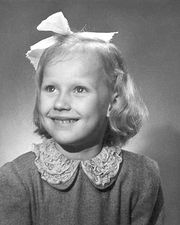
Tarja Halonen was born on 24 December 1943 in the district of Kallio which is a traditional working-class area in central Helsinki. Her mother Lyyli Elina Loimola was a set-dresser and her father Vieno Olavi Halonen worked as a welder. Halonen's parents married each other at the beginning of World War II and Tarja was born a few years later. Vieno Halonen was at the frontline and Lyyli Halonen was working in a shoe factory when their daughter was born. After the war the couple decided to get a divorce, and in 1950 Lyyli Halonen married her new husband Thure Forss, who worked as an electrician and was very active in the working-class community.
Both Halonen's mother and her stepfather influenced her world view extensively. Halonen later said that her mother was a true survivor, always an extremely active and resilient person who valued good, honest and modest hardworking people. When she entered politics, Halonen stated that these are also the qualities and attributes she respects in people.
In 1950 she began her studies in Kallio Elementary school from where she later moved to Kallio Gymnasium and finally finished her matriculation examination in 1962. She began to study Art History in the University of Helsinki in 1962 but in autumn 1963 she changed her studies to law, and obtained her Master of Laws degree in 1968 specializing in criminal law.
She began to work as a lawyer, already before obtaining her degree, in a credit surveillance company Luotonvalvonta oy in 1967. After working there for a few years, she was hired by the National Union of University Students in Finland to work as a Social Affairs and General Secretary from 1969 to 1970. Her work in the Union spurred her interest in politics, and in 1970 she obtained a post as a lawyer in the Central Organisation of Finnish Trade Unions, being the first female ever to work as a lawyer in the Union.
Political career: 1970–2000
Trade unionist
In 1971 she decided to join the Social Democratic Party of Finland which had close ties with the trade unions where she worked as a lawyer from 1970 to 1974.
In early 1970 she was elected to represent Central Organisation of Finnish Trade Unions in a committee that called for the recognition of the German Democratic Republic.[2] Later she became the Vice-President of the committee, which lobbied then-President Urho Kekkonen.[2][3] During the presidential elections of 2006 she was criticized by rivals for this.[4] She responded that the committee was formed by members from many different political parties including conservative parties. In 1973 Finland recognized both the German Democratic Republic and the Federal Republic of Germany.[5]
First elections
In 1974 Prime Minister Kalevi Sorsa appointed Halonen as his parliamentary secretary. She became acquainted with the world of Finnish politics and government and her political career took a great step forward, as she went on to hold a number of public offices. Sorsa later said that he wanted his parliamentary secretary to have good ties with the trade unions of Finland and have skills in jurisprudence.
Working in the Parliament made Halonen even more interested in politics and she decided to take part in the municipal elections of 1976. She was elected to the Helsinki City Council, a position she held continuously for five terms from 1977 to 1996. Additionally, in 1979 she was elected to the Parliament of Finland as a representative of the Helsinki constituency. She served five full terms and less than a year of her sixth term in the parliament until her inauguration as President in 2000. In the Parliament her first formal post was as Chairman of the Social Committee from 1984 to 1987.
Minister career
In 1987, Halonen was appointed by Prime Minister Harri Holkeri to be the Minister of Social Affairs and Health in the government, a position she held until 1990. In addition to this, she served as Minister of Nordic Cooperation from 1989 until 1991, the same year in which she was also appointed chairman of the International Solidarity Foundation, a post she relinquished in 2000.
From 1990 to 1991 she served as Minister of Justice, and from 1995 until her election as President she served as the Minister for Foreign Affairs in the government of her Social Democratic colleague Prime Minister Paavo Lipponen [6].
2000 Presidential campaign
Halonen announced in 1999 that she wished to stand as a candidate for President in the 2000 Presidential elections. In the preliminary elections of the Social Democrats Halonen ran against Pertti Paasio, a member of the European Parliament and former party chairman, and Jacob Söderman, the European Ombudsman. The incumbent, Martti Ahtisaari, refused to run in party preliminaries and thus announced that he would not run for a second term. Halonen won the preliminaries by a landslide, getting 7800 of the total of 12,800 votes.
Halonen was a surprising candidate as she didn't represent many traditional values: She was known as a left-wing social democratic party member, who lived in a domestic partnership, was a single parent and had resigned from the national church, the Evangelical Lutheran Church of Finland. While Halonen started from fourth place in the presidential election polls, surprisingly in the first round of the elections she got the most votes, 40.0%. Her nearest opponent, the former Prime Minister Esko Aho of the Centre Party, got 34.4%.
Since neither of the two candidates got over 50% of the votes, a second round was held as required by Finnish Law. In the second round, Halonen narrowly defeated her opponent with 51.6% against 48.4% thus becoming Finland's first female President. Her first term began on 1 March 2000.
First term in office: 2000–2006

After her narrow election victory in the first election, Halonen's approval ratings rose and reached a peak of 88% in December 2003.
In a 2001 Halonen said that she is worried about the Russian response if NATO approved membership bids by Baltic countries.[7] Latvian President Vaira Vike-Freiberga asked what she meant and whether Halonen is actively opposing NATO membership of Baltic countries.[8]
In the Iraqgate scandal, Halonen's advisor Martti Manninen leaked confidential documents to the Centre Party leader Anneli Jäätteenmäki, who would become Prime Minister. The revelations led to the resignation of Jäätteenmäki.[9]
Halonen has opposed the use of landmines in Finnish military doctrine.[10]
Halonen has defended cluster bombs and did not sign a treaty which would have banned Finland from using these kinds of weapons.[11]
2006 Presidential campaign
On 20 May 2005, Halonen held a press conference in Mäntyniemi where she announced her willingness to run for a second term. Officially, this was the desired answer for the SDP delegation that had visited her two days earlier. In addition to her own party's support, the leader of the Left Alliance, Suvi-Anne Siimes, gave her support for Halonen's future campaign.
SAK openly lobbied for her re-election. It used its members money on mudslinging campaigns on behalf of Halonen. In flyers, "Niinistö is presented as the horror of worker, whereas SAK-supported Halonen is like a worker's dream". Halonen said she approves the flyers.[12]
A study analyzed newspaper articles and concluded that the main newspaper Helsingin Sanomat produced almost exclusively positive tone stories about Halonen and much more negative tone articles about candidates Niinistö, Vanhanen and Hautala.[13]
American talk show host Conan O'Brien made recurring jokes about Halonen on his show, Late Night With Conan O'Brien, because of his own resemblance to her.[14] He endorsed Halonen and produced humorous mock campaign ads and attack ads against her opponents. He went as far as visiting Finland and meeting Halonen.[14]
On 19 November, the SDP's party council meeting was held; praised as "the president of the whole nation", she was unanimously chosen as the presidential candidate. Shortly thereafter, the party council of the Left Alliance gave the party's official support to Halonen.
Halonen's received 46% of the first round vote in the election. Sauli Niinistö (of the National Coalition Party) was second with 24%. They faced each other in a runoff on 29 January 2006, where Halonen was re-elected with 51.8% of the vote against Mr. Niinistö's 48.2%. The re-election was a close call. She led in the advance voting, but she eventually received fewer votes on the actual voting day than Mr. Niinistö did.
Second term in office: 2006–
In 2008, Halonen nominated SDP-affiliated Ritva Viljanen for a second term in the Interior Ministry. The Council of State had nominated Ilkka Laitinen, who was unambiguously seen as the most competent candidate. During the past 50 years, only once the President has not obeyed the Council of State consensus and Halonen was accused of cronyism.[15][16]
In September 2008, Halonen was perceived to insult Estonia by saying that the Estonians suffer from "post-Soviet stress condition". Estonian President Toomas Hendrik Ilves commented on the issue, saying that "Estonia has never condemned, and will not condemn foreign affairs decisions of another EU country. It neither will assess psychiatric state of other EU countries".[17][18] In 2009, Halonen rejected calls to apologize for Finland's attitude towards Estonian independence from the Soviet Union in 1991.[19]
Political views
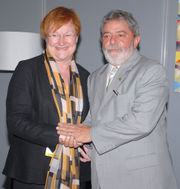
Early in her political career Halonen represented the far left wing of her former party (Social Democrat). She publicly opposed the proposed free trade agreement of the European Economic Community (EEC, later European Union) in 1973, by signing a petition along with 500 other more-or-less prominent social democrats and socialists. As an employee of the Central Organisation of Finnish Trade Unions, Halonen advocated diplomatic recognition of the German Democratic Republic. Otherwise she was loyal to President Kekkonen's foreign policy, which was founded on Finnish neutrality and good relations with the Soviet Union.
Throughout her political career, Halonen has described herself as supporter of international solidarity. She describes herself as a "relative pacifist", meaning that she doesn't support unilateral disarmament. She has strongly defended the President's role as the commander in chief of the military.[20] She opposes NATO membership. Her strong stands on these issues have characterised her presidential term and shaped Finnish foreign policy, in part in cooperation with the like-minded former Minister for Foreign Affairs, Erkki Tuomioja.
Halonen has publicly supported SAK involvement in politics.[21]
The Constitution of Finland and Halonen's decision to take part in some European Union meetings with the Prime Minister has created the so-called "problem of two dinner plates" in Finland.[22][23]
Rumors have circulated about Halonen insulting and bullying servants and other SDP members, who have anonymously described these alleged incidents.[24][24]
Personal life
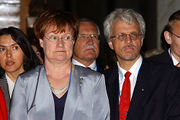
President Halonen says her interests include art history, the theatre and swimming. Halonen had two cats as of 2005. She says she speaks Finnish, Swedish, and English, and is studying Estonian.[25]
On 26 August 2000, President Halonen married her longtime partner, Dr Pentti Arajärvi, in a civil ceremony at her official residence, Mäntyniemi, after a relationship of more than fifteen years. Halonen's adult daughter Anna, and Arajärvi's adult son, Esko, acted as witnesses. Both children are from previous relationships.
In the 1960s, she left the Evangelical Lutheran Church of Finland, to which the majority of Finns belong, to protest against its policy of taxing church members, and its stance against female priests. Today, the church accepts women as priests, and Halonen has stated that she has no personal reason not to return to the church but refrains from doing so in order not to give a signal that might be misinterpreted.[26] In 1990's, Halonen acted as the chairman of Suomen setlementtiliitto, a Christian social work organization.[27]
In 1980–1981 Halonen served as the chairman of SETA (Seksuaalinen Tasavertaisuus RY, Sexual Equality), the main LGBT rights organization in Finland. When she became Minister for Justice in 1990, there were high hopes among SETA members that she would stand up for gay rights.[28] In 2003, a widely publicised incident occurred when member of parliament Tony Halme referred to Tarja Halonen as a lesbian. In a radio interview, Halme referred to his background of growing up "in the streets", and said: "We have a lesbian as president and me as parliamentarian. Everything seems possible."[29] Although Halme intended to refer to social mobility with his comment, it was interpreted as an insult by much of the media. Halonen herself made no comment. Halme later apologized saying he had been misunderstood.[30] According to her authorized biography published in 2005, Halonen is critical of some unnamed members of the Finnish civil service for being gay or lesbian and not coming out and campaigning for sexual equality. She accused these closeted homosexuals of reaping the benefits of other people's work for sexual equality without contributing themselves.
Chronology of her political career
- Member of the Social Democratic Party 1971–2000
- Vice-President of the GDR Recognizion Committee 1972–1973
- Prime Minister's Parliamentary Secretary 1974–1975
- Member of Helsinki City Council 1977–1996
- Member of Parliament (Helsinki constituency) 1979–2000
- Member of the Parliamentary Social Affairs Committee 1979-1986 (chair 1985-1986)
- Deputy member of the Parliamentary Commerce Committee 1979-1982
- Presidential elector 1979-1986
- Member of the Parliamentary Trustees of the Social Insurance Institution of Finland 1980-1984
- Deputy member, Parliamentary Foreign Affairs Committee 1982-1986
- Minister of Social Affairs and Health 1987–1990
- Minister of Nordic Cooperation 1989–1991
- Minister of Justice 1990–1991
- Member and vice chair of the Parliamentary Legal Affairs Committee 1991-1995
- Member of the Parliamentary Grand Committee 1993-1995 (chair 1995)
- Minister of Foreign Affairs 1995–2000
- President of Finland 2000–present
Honours
Honorary degrees
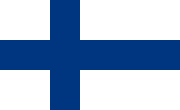 Theatre Academy Helsinki, 2009
Theatre Academy Helsinki, 2009 University of Minnesota Duluth, 2008
University of Minnesota Duluth, 2008 Helsinki University of Technology, 2008
Helsinki University of Technology, 2008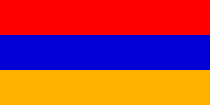 Yerevan State University, 2005
Yerevan State University, 2005 University of Tartu, 2004
University of Tartu, 2004 University of Bluefiels, 2004
University of Bluefiels, 2004 University of Turku, 2003
University of Turku, 2003 Finlandia University, 2003
Finlandia University, 2003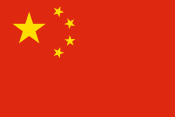 Chinese Academy of Forestry, 2002
Chinese Academy of Forestry, 2002 Eötvös Loránd University, 2002
Eötvös Loránd University, 2002 University of Kent, 2002
University of Kent, 2002 Ewha Womans University, 2002
Ewha Womans University, 2002 Helsinki School of Economics, 2001
Helsinki School of Economics, 2001 University of Helsinki, 2000
University of Helsinki, 2000
See also
- Tarja Halonen's first inauguration speech, 2000
- Tarja Halonen's second inauguration speech, 2006
- List of national leaders
References
- ↑ "The 100 Most Powerful Women". Forbes.com. http://www.forbes.com/lists/2009/11/power-women-09_The-100-Most-Powerful-Women_Rank_3.html.
- ↑ 2.0 2.1 [1]
- ↑ Helsingin Sanomat Magazine, Doing work for GDR "Itä-Saksan asialla", 12.7.1992
- ↑ DDR:n varjo vielä valaisematta. Turun Sanomat
- ↑ http://www.hs.fi/english/article/Professor+says+allegations+of+President+Halonen%E2%80%99s+GDR+activism+are+untrue/1135230268074
- ↑ "Ministerikortisto". Valtioneuvosto. http://www.valtioneuvosto.fi/hakemisto/ministerikortisto/ministeritiedot.asp?nro=464.
- ↑ Halonen: Baltian maiden liittyminen Natoon epäilyttää. MTV3. 08.04.2001
- ↑ Halosen Nato-lausunnoista kohu. MTV3. 07.05.2001
- ↑ Book on Iraq leak scandal: Manninen leaked secret documents out of job frustration
- ↑ Halonen criticised as global do-gooder; PM Vanhanen comes to President’s defence
- ↑ Halonen puolustaa rypälepommeja: ”Suomella ei ole mahdollisuuksia”
- ↑ Niinistö kiistää SAK:n syytökset
- ↑ Halonen, Halonen, Halonen - Onko presidentti valtamedian erityissuosiossa?. City
- ↑ 14.0 14.1 "Conan O'Brien meets with Finnish leader". Associated Press. USA Today. 14 February 2006. http://www.usatoday.com/life/people/2006-02-14-obrien-finland_x.htm. Retrieved 27 August 2009.
- ↑ Halonen nimitti Viljasen sisäministeriön kansliapäälliköksi
- ↑ Presidentti Halonen nimitti Ritva Viljasen sisäministeriön kansliapäälliköksi
- ↑ Halonen suututti virolaiset
- ↑ Yle: Halosen lausunto kuohuttaa Virossa
- ↑ Tarja Halonen: ”En lämpene kollektiivisille anteeksipyynnöille”. Suomen Kuvalehti
- ↑ Anna Perho (2005): Tarja Halonen - ensimmäinen nainen City-lehti 24/2005
- ↑ Halonen puolustaa SAK:n roolia vaaleissa
- ↑ One foreign policy or two?. Tuomas Forsberg
- ↑ Finland's Halonen plays down dark clouds over two-plate policy. Helsinki Times
- ↑ 24.0 24.1 A-piste TV1, 19.12.2005 klo 21, see also Tarja Halonen: kiukutteleva, simputtava ja nöyryyttävä työpaikkakiusaaja vailla paineensietokykyä and Sietämätön ja pompotteleva Halonen - kauhuesimies
- ↑ Office of the President of the Republic of Finland (2008). "President of the Republic Tarja Halonen answers children's questions". The President of Finland official site. http://www.presidentti.fi/netcomm/news/showarticle.asp?intNWSAID=43033&LAN=EN&. Retrieved 2 August 2008.
- ↑ Interview of Halonen in Kotimaa 12 February 2005. On the official webpage of the president. Retrieved 10-10-2007. (Finnish)
- ↑ Tarja Halosen setlementtiliike. Palkkatyöläinen 3/2000. Retrieved 10-10-2007. (Finnish)
- ↑ Tarja Halonen & SETA
- ↑ Windy City Times - European Recognition, Diana Tapes Shock, Finnish Pres called Lesbian
- ↑ ranneliike.net:
External links
| Political offices | ||
|---|---|---|
| Preceded by Matti Louekoski |
Minister of Justice 1990–1991 |
Succeeded by Hannele Pokka |
| Preceded by Paavo Rantanen |
Minister of Foreign Affairs 1995–2000 |
Succeeded by Erkki Tuomioja |
| Preceded by Martti Ahtisaari |
President of Finland 2000–present |
Incumbent |
|
|||||||
|
||||||||